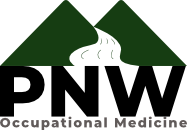Ensuring the health and well-being of employees is paramount for any successful business. In Richland, WA, there are numerous occupational health services available that can help businesses maintain a safe and productive workplace. Here are some essential services that every business should consider.
1. Employee Health Screenings
Regular health screenings can help identify potential health issues early on, allowing for timely intervention and treatment. These screenings can include tests for blood pressure, cholesterol, diabetes, and other common health concerns. By ensuring that employees keep their health in check, businesses can minimize absenteeism and promote a healthier work environment. These routine checks also build a culture of health consciousness within the workforce, encouraging employees to take proactive steps toward their health.
Moreover, health screenings can be tailored to the specific needs of different job roles. For instance, employees exposed to strenuous physical labor might benefit from periodic musculoskeletal assessments. Meanwhile, office workers can undergo vision and ergonomic screenings to prevent common workplace ailments. These personalized assessments ensure that all potential health risks associated with various roles are adequately addressed.
2. Vaccination Programs
Vaccination programs can protect employees from various infectious diseases, such as influenza and hepatitis. By offering these programs, businesses can reduce the spread of illness and minimize employee sick days. Keeping the workforce vaccinated is especially crucial during flu season, as it can prevent widespread outbreaks within the office. Vaccination programs are not just about the individual; they create a healthier community within the workplace.
Furthermore, businesses that offer vaccination programs demonstrate a commitment to their employees’ health and safety. This fosters a sense of mutual respect and care, ultimately boosting morale and job satisfaction. Investment in such preventive measures can significantly reduce long-term healthcare costs for both employees and employers, making it a win-win situation for all parties involved.
3. Ergonomic Assessments
Ergonomic assessments evaluate workstations and job tasks to ensure they are designed to minimize strain and injury. Proper ergonomics can improve employee comfort and productivity while reducing the risk of musculoskeletal disorders. By adjusting the work environment to fit the needs of the employees, businesses can significantly reduce the incidence of workplace injuries and related absences.
Investing in ergonomic improvements, such as adjustable chairs, desks, and computer equipment, can have profound effects on employees’ overall well-being. An ergonomic assessment might also include training employees on the best postures and movements to adopt during their workday. This preventive approach not only minimizes physical strain but also enhances overall job satisfaction and performance.
4. Mental Health Support
Providing mental health support through counseling services, stress management programs, and mental health awareness training can help employees cope with stress and maintain their mental well-being. Mental health is a vital component of overall wellness, and addressing it can lead to a more positive workplace atmosphere. Initiatives like these can help reduce the stigma associated with mental health issues, encouraging more employees to seek the support they need.
Organizations can also consider partnering with mental health professionals to offer on-site or virtual therapy sessions. This accessibility makes it easier for employees to receive help without disrupting their work schedules. By investing in mental health resources, businesses can help mitigate the impacts of chronic stress, burnout, and other mental health issues, ultimately fostering a more resilient and focused workforce.
5. Occupational Therapy
Occupational therapy can assist employees in recovering from work-related injuries and illnesses. Therapists work with employees to develop personalized treatment plans that help them return to work safely and efficiently. This type of therapy is not only about physical recovery; it also includes modifications to the work environment and tasks to accommodate the individual’s abilities and limitations.
The goal is to facilitate a smooth and swift return to productivity, minimizing downtime for both the employee and the business. Occupational therapy can also offer preventive measures, such as training employees in proper lifting techniques and safe work practices, thereby reducing the risk of future injuries and promoting long-term health and safety.
6. Substance Abuse Programs
Implementing substance abuse programs can help identify and support employees struggling with addiction. These programs typically include confidential counseling, treatment options, and education on the risks of substance abuse. Substance abuse can severely impact an employee’s performance and well-being, and addressing it proactively can prevent accidents and improve overall workplace safety.
Confidentiality is key in these programs, ensuring that employees feel safe seeking help without the fear of stigma or job loss. By offering comprehensive support, businesses can aid in the recovery process and help employees regain control of their lives and careers. Substance abuse programs also educate other employees about the signs of substance misuse and the importance of a supportive and non-judgmental work environment.
7. Workplace Safety Training
Regular workplace safety training can educate employees on best practices and protocols to prevent accidents and injuries. This training can cover topics such as fire safety, hazardous materials handling, and emergency response procedures. Ensuring that everyone is well-versed in safety measures creates a culture of safety and preparedness.
Workplace safety training should be an ongoing process, with regular updates and refresher courses. By keeping all employees informed about new safety regulations and procedures, businesses can maintain a consistently safe work environment. This preventive approach not only protects the employees but also minimizes the risk of costly accidents and regulatory fines for the business.
8. Fitness and Wellness Programs
Fitness and wellness programs encourage employees to adopt healthier lifestyles. These programs can include gym memberships, fitness challenges, nutritional workshops, and on-site fitness classes. Encouraging physical activity and healthy eating habits can lead to improved employee morale and productivity.
Wellness programs can be tailored to meet the diverse needs and interests of the workforce, ensuring widespread participation. For example, offering yoga and meditation sessions can appeal to employees looking for ways to reduce stress and enhance mental clarity. By promoting a holistic approach to health, businesses can help employees achieve a better work-life balance, which translates to higher retention rates and overall job satisfaction.
9. Health Education Workshops
Health education workshops provide employees with valuable information on various health topics, such as nutrition, weight management, and disease prevention. These workshops can empower employees to make healthier choices. By addressing common health concerns through education, businesses can foster a more health-conscious workforce.
Hosting regular workshops on different health topics can help keep employees informed and engaged. Bringing in expert speakers or partnering with local health organizations can enhance the quality and relevance of the information presented. Workshops can also serve as a platform for employees to ask questions and seek personalized advice, making health education a more interactive and impactful experience.
10. Return-to-Work Programs
Return-to-work programs help employees transition back to work after an illness or injury. These programs can include modified duties, flexible scheduling, and ongoing support to ensure a smooth and safe return to work. By providing a structured plan for reintegration, businesses can support employees’ recovery while maintaining productivity.
Effective return-to-work programs require collaboration between healthcare providers, human resources, and the affected employee. By accommodating the employee’s needs and limitations, businesses can help them regain confidence and rebuild their skills. This approach not only benefits the employees but also reduces the financial and operational impacts of prolonged absences on the business.
These programs can be a testament to the company’s commitment to its employees’ well-being. Offering extensive support during this transition period demonstrates that the business values its workforce and is willing to invest in their long-term health and success. This, in turn, can build trust and loyalty among employees, contributing to a positive and collaborative workplace environment.

